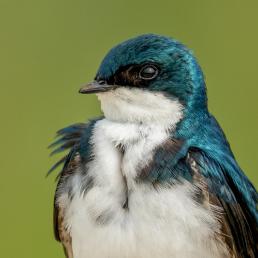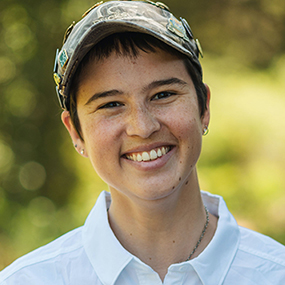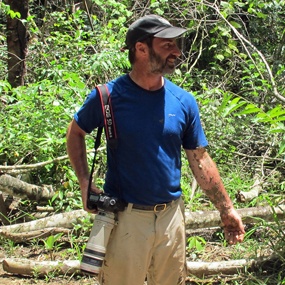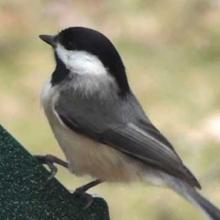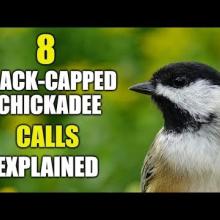

Join BirdNote tomorrow, November 30th!
Illustrator David Sibley and actor H. Jon Benjamin will face off in the bird illustration battle of the century during BirdNote's Year-end Celebration and Auction!
One of the biggest threats to birds is the decline in biodiversity due to habitat loss — and the traditional, manicured lawn isn’t helping. Growing native plants in your yard allows you to protect birds at home, says ecologist Douglas Tallamy, who co-founded an organization called Homegrown National Park® to help people transform their lawns into havens for wildlife.
Homegrown National Park® is a grassroots call-to-action to regenerate diversity and ecosystem function by planting native plants and creating new ecological networks. Learn how to plant native and get on the HNP map here.
BirdNote®
Creating Bird Habitat at Home
Written by Ariana Remmel
This is BirdNote.
One of the biggest threats to birds is the decline in biodiversity due to habitat loss — and the traditional, manicured lawn isn’t helping.
[Black-capped Chickadee call]
Even birds who visit backyard feeders — like these Black-capped Chickadees — need a healthy mix of seeds, berries, and insects often found on the native plants we villainize as “weeds” when they grow in our lawns, says ecologist Douglas Tallamy.
Doug Tallamy: We have more than 40 million acres of lawn in the US, which is the size of New England. And that's an ecological deadscape.
[Deciduous Forest Morning songbirds]
That means one of the easiest ways to protect birds at home is to grow native plants, says Tallamy, who co-founded an organization called Homegrown National Park® to help people transform their lawns into havens for wildlife.
Doug Tallamy: And I’d love people to stop looking at their yard as an isolated ecosystem, it's part of a neighborhood. And somebody who's got a sunny spot down the street, but no trees? Okay, that's where the pollinator gardens go. Somebody who's got a giant oak and is overspreading two or three yards? That's great! That's going to provide a lot of resources for many of the houses in that yard. So look at your neighborhood as an entire local ecosystem and see what the total resources are.
Reducing your lawn to make room for native plants is a small step forward —
Doug Tallamy: But imagine if everybody did this. This is why we call the Homegrown National Park® movement a grassroots movement, it's a call to action.
To learn more about Homegrown National Park®, start at our website: BirdNote dot org.
[Black-capped Chickadee call]
I’m Ariana Remmel.
###
Senior Producer: John Kessler
Content Director: Allison Wilson
Producer: Mark Bramhill
Managing Producer: Conor Gearin
Bird sounds provided by The Macaulay Library of Natural Sounds at the Cornell Lab of Ornithology, Ithaca, New York. Black-capped Chickadee ML 202239 recorded by J. McGowan. Morning Songbirds recorded by Gordon Hempton.
BirdNote’s theme was composed and played by Nancy Rumbel and John Kessler.
© 2022 BirdNote March 2022 Narrator: Ariana Remmel
ID # hnp-01-2022-03-21 hnp-01
